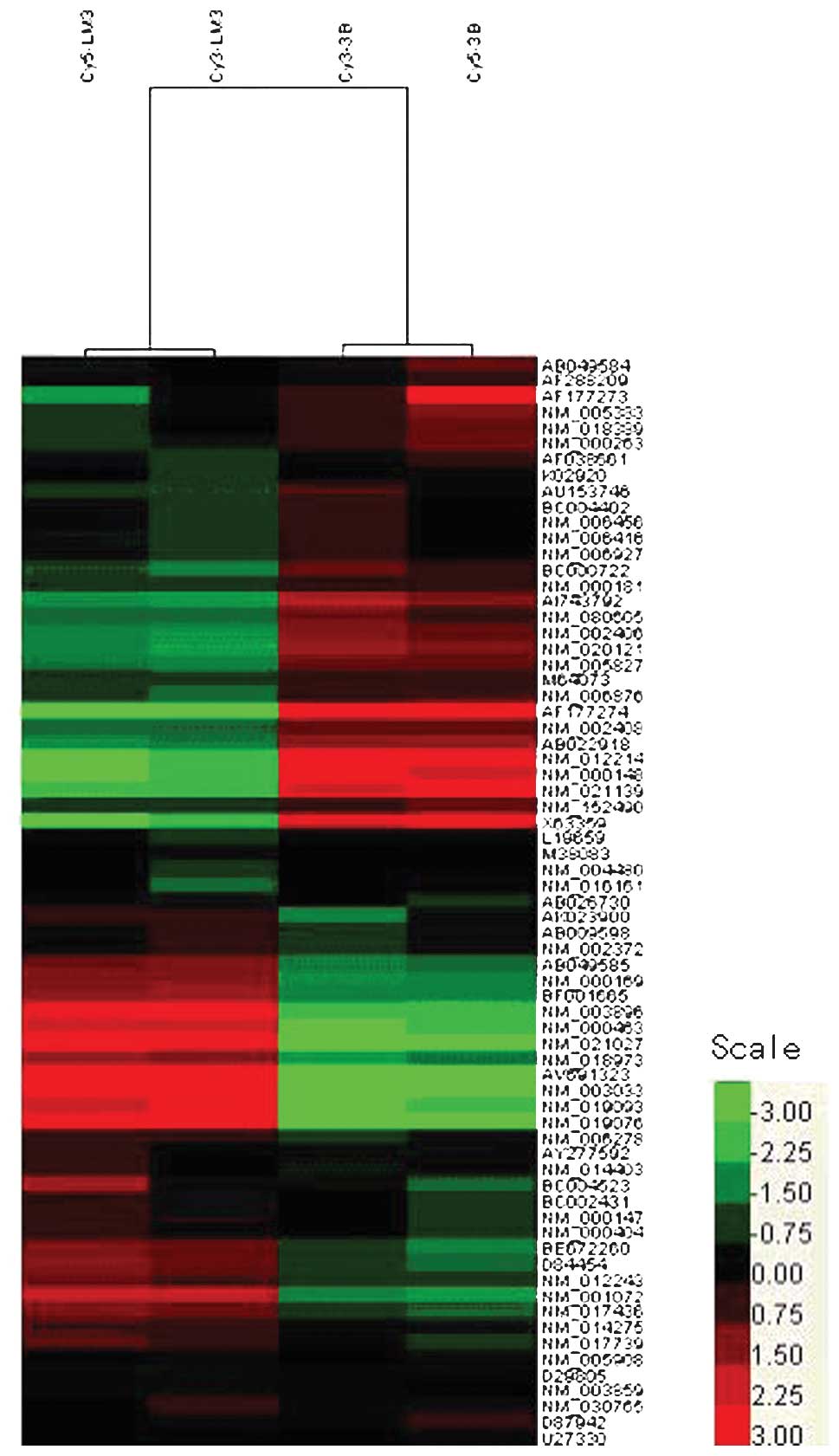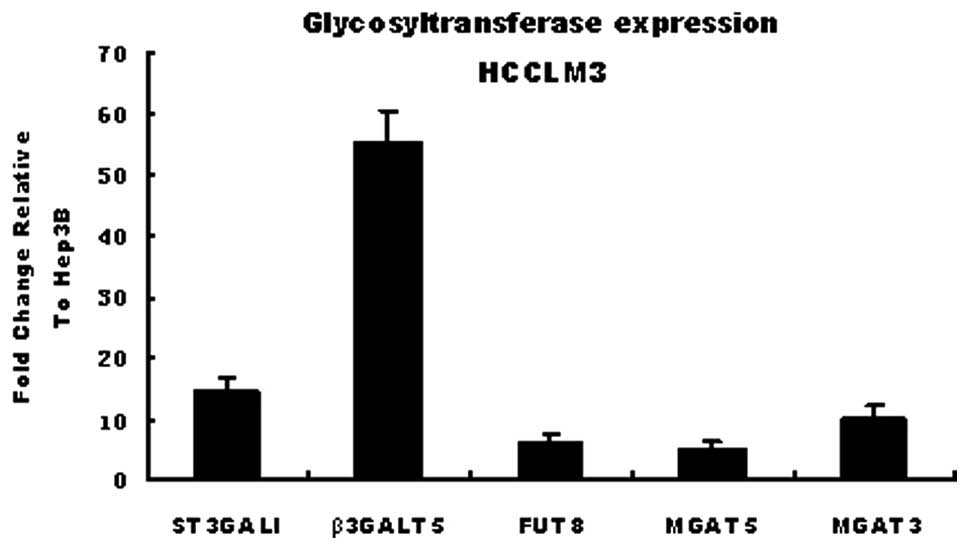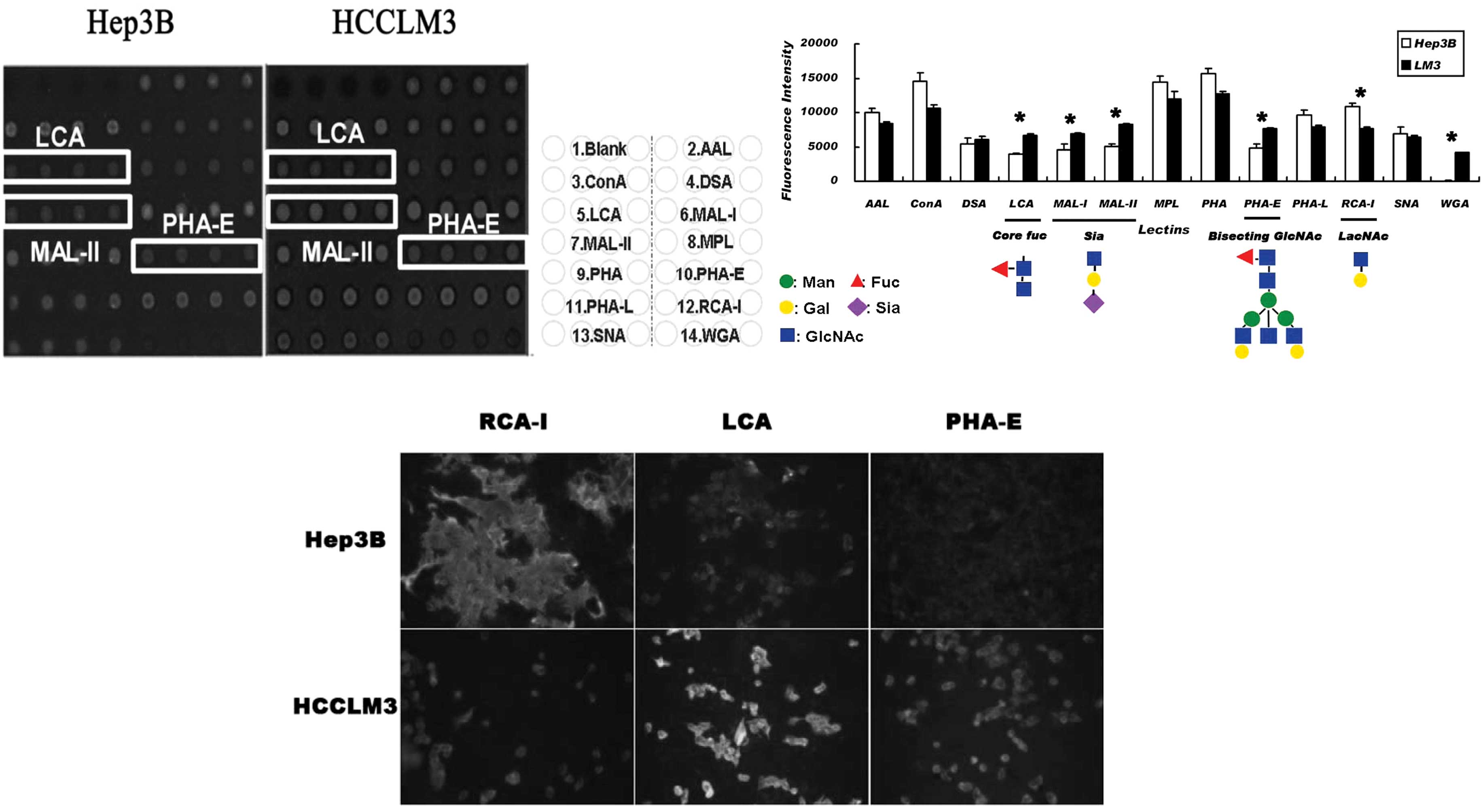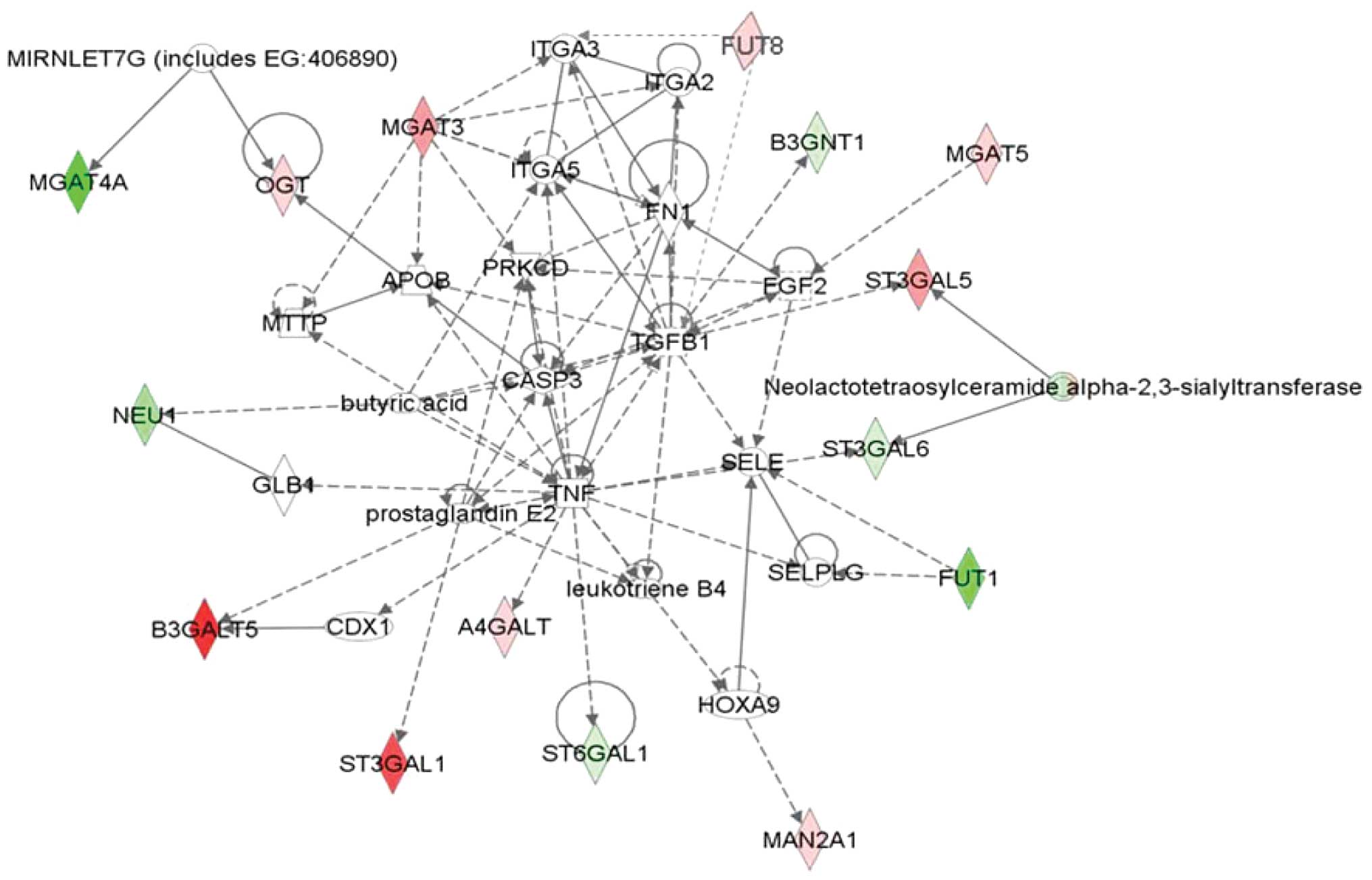Glycan-related gene expression signatures in human metastatic hepatocellular carcinoma cells
- Authors:
- Xiaonan Kang
- Nian Wang
- Chen Pei
- Lu Sun
- Ruixia Sun
- Jie Chen
- Yinkun Liu
-
View Affiliations
Affiliations: Liver Cancer Institute of Zhongshan Hospital and Institute of Biomedical Science, Fudan University, Shanghai, P.R. China, Department of Physiology, Chengdu Medical College, Sichuan, P.R. China
- Published online on: December 23, 2011 https://doi.org/10.3892/etm.2011.430
-
Pages:
415-422
Abstract
Human hepatocellular carcinoma (HCC) ranks second in cancer mortality in China; recurrence and metastasis have been the cause of the high mortality. Glycans on the cell surface play a pivotal role in tumor metastasis. The global alteration in the structure and composition of N-glycans during HCC metastasis remains unknown. To understand glycan alterations of glycoproteins by correlating the glycosyltransferase expression profile with glycan structure, we systematically used glycan profiling tools: glycogene microarray analyses of 115 genes, including glycotransferases, glycosidases and nuclear sugar transporters and lectin chips to investigate the glycan-related gene expression signatures in the high metastatic potential HCC cell line, HCCLM3, in comparison to the HCC cell line, Hep3B, with low metastatic potential. Of the 115 genes, 18 genes were up‑regulated in high metastatic potential HCCLM3 cells in comparison to Hep3B cells, while 11 genes were down-regulated. The differentially expressed genes, such as ST3GalI, FUT8, β3GalT5, MGAT3 and MGAT5, were mainly involved in the synthesis of N-glycan and glycolipids, particularly the sialyl Lewis antigen. The results of the glycogene microarray analysis were further validated by quantitative real-time PCR analysis and lectin-based analysis. The differentially expressed glycogenes identified in this study may provide new insights and represent novel factors for investigating the functional role of cell surface carbohydrate‑mediated HCC metastasis.
View References
|
1.
|
CL ChafferRA WeinbergA perspective on
cancer cell
metastasisScience33115591564201110.1126/science.120354321436443
|
|
2.
|
S HakomoriAberrant glycosylation in tumors
and tumor-associated carbohydrate antigensAdv Cancer
Res52257331198910.1016/S0065-230X(08)60215-82662714
|
|
3.
|
K OhtsuboJD MarthGlycosylation in cellular
mechanisms of health and
diseaseCell126855867200610.1016/j.cell.2006.08.01916959566
|
|
4.
|
FL WangSX CuiLP SunHigh expression of
alpha 2, 3-linked sialic acid residues is associated with the
metastatic potential of human gastric cancerCancer Detect
Prev32437443200910.1016/j.cdp.2009.01.00119232843
|
|
5.
|
G LaucV ZoldosProtein glycosylation - an
evolutionary crossroad between genes and environmentMol
Biosyst623732379
|
|
6.
|
PA FaraziRA DePinhoHepatocellular
carcinoma pathogenesis: from genes to environmentNat Rev
Cancer6674687200610.1038/nrc193416929323
|
|
7.
|
EM ComelliSR HeadT GilmartinA focused
microarray approach to functional glycomics: transcriptional
regulation of the
glycomeGlycobiology16117131200610.1093/glycob/cwj04816237199
|
|
8.
|
AV NairnWS YorkK HarrisEM HallJM PierceKW
MoremenRegulation of glycan structures in animal tissues:
transcript profiling of glycan-related genesJ Biol
Chem2831729817313200810.1074/jbc.M80196420018411279
|
|
9.
|
P ChenY LiuX KangL SunP YangZ
TangIdentification of N-glycan of alpha-fetoprotein by lectin
affinity microarrayJ Cancer Res Clin
Oncol134851860200810.1007/s00432-008-0357-718264723
|
|
10.
|
C SaravananZ CaoSR HeadN PanjwaniAnalysis
of differential expression of glycosyltransferases in healing
corneas by glycogene
microarraysGlycobiology201323201010.1093/glycob/cwp13319736239
|
|
11.
|
Y ZhaoS ItohX WangDeletion of core
fucosylation on alpha3beta1 integrin down-regulates its functionsJ
Biol Chem2813834338350200610.1074/jbc.M60876420017043354
|
|
12.
|
M OhnoA NishikawaM KoketsuEnzymatic basis
of sugar structures of alpha-fetoprotein in hepatoma and
hepatoblastoma cell lines: correlation with activities of alpha 1–6
fucosyltransferase and N-acetylglucosaminyltransferases III and
VInt J Cancer5131531719921373706
|
|
13.
|
AS SultanE MiyoshiY IharaA NishikawaY
TsukadaN TaniguchiBisecting GlcNAc structures act as negative
sorting signals for cell surface glycoproteins in forskolin-treated
rat hepatoma cellsJ Biol
Chem27228662872199710.1074/jbc.272.5.28669006930
|
|
14.
|
Y ZhaoY SatoT IsajiBranched N-glycans
regulate the biological functions of integrins and cadherinsFEBS
J27519391948200810.1111/j.1742-4658.2008.06346.x18384383
|
|
15.
|
J DennisC WallerR TimplV
SchirrmacherSurface sialic acid reduces attachment of metastatic
tumour cells to collagen type IV and
fibronectinNature300274276198210.1038/300274a07144883
|
|
16.
|
M UgorskiA LaskowskaSialyl Lewis(a): a
tumor-associated carbohydrate antigen involved in adhesion and
metastatic potential of cancer cellsActa Biochim
Pol49303311200212362971
|
|
17.
|
MM FusterJR BrownL WangJD EskoA
disaccharide precursor of sialyl Lewis X inhibits metastatic
potential of tumor cellsCancer Res6327752781200312782582
|
|
18.
|
WR HarringtonS SenguptaBS
KatzenellenbogenEstrogen regulation of the glucuronidation enzyme
UGT2B15 in estrogen receptor-positive breast cancer
cellsEndocrinology14738433850200610.1210/en.2006-035816690804
|
|
19.
|
M CongiuML MashfordJL SlavinPV DesmondUDP
glucuronosyltransferase mRNA levels in human liver diseaseDrug
Metab Dispos30129134200210.1124/dmd.30.2.12911792680
|
|
20.
|
ZM ZhangXY YangJH YuanZY SunYQ
LiModulation of NRF2 and UGT1A expression by
epigallocatechin-3-gallate in colon cancer cells and BALB/c
miceChin Med J (Engl)12216601665200919719968
|
|
21.
|
P HerrG KorniychukY YamamotoK GrubisicM
OelgeschlagerRegulation of TGF-(beta) signalling by
N-acetylgalactosaminyltransferase-like
1Development13518131822200810.1242/dev.01932318417620
|














